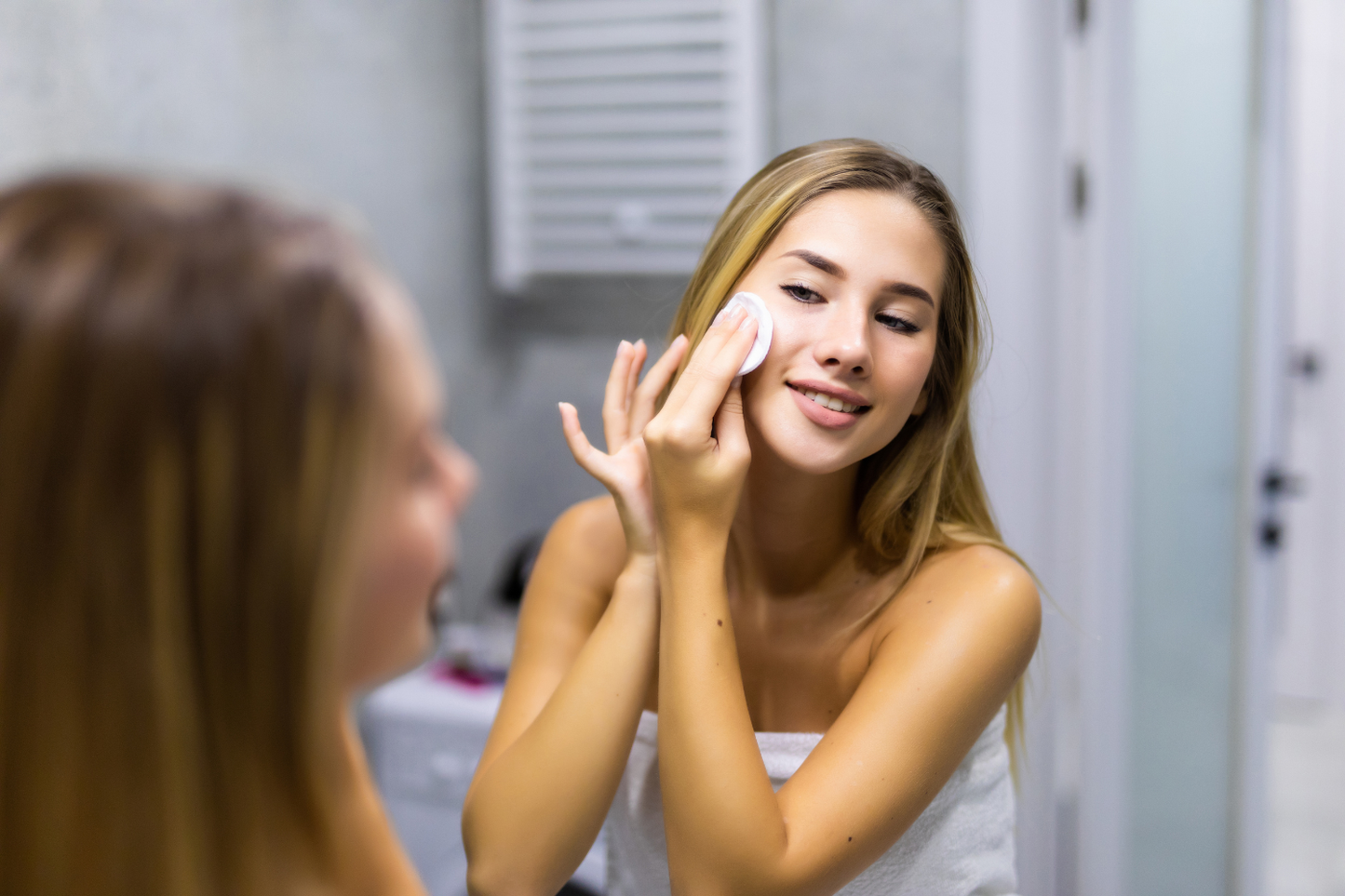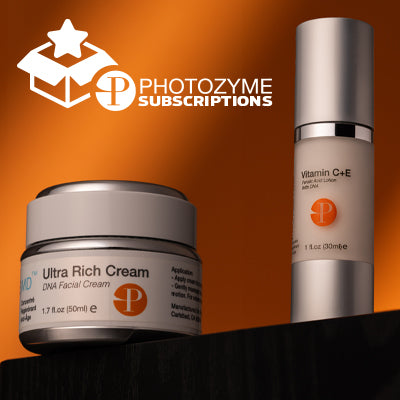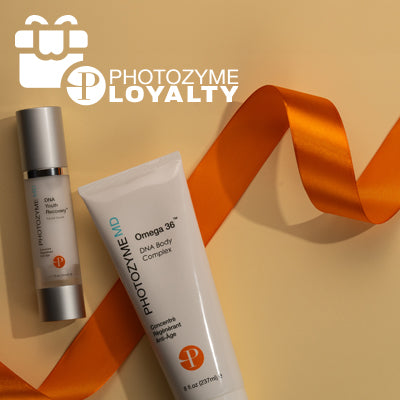
See how to lighten skin safely with dermatologist-approved tips and smart DNA enzyme technology. Reveal a brighter, even complexion with Photozyme.
Key Takeaways:
- Identify The Root Causes Of Skin Darkening: Understand the key factors contributing to skin discoloration, including sun exposure, hormonal fluctuations, inflammation, and certain medications. Recognizing these influences helps guide more effective and informed skincare choices.
- Use Clinically Backed Ingredients For Melanin Regulation: Safe skin lightening reduces excess pigment through evidence-based ingredients like topical retinoids, vitamin C, and niacinamide. Avoid harmful compounds such as unregulated hydroquinone and mercury, which pose long-term health risks.
- Prioritize Sun Protection & Professional Options: Daily use of broad-spectrum sunscreen prevents further discoloration. Complement your routine with personalized treatments such as chemical peels or laser therapy for deeper correction and visible, even-toned results.
Achieving a brighter, more even complexion requires science-backed strategies that support the skin without damaging it. If you're researching how to lighten skin, start by understanding what dermatologists prioritize: skin barrier protection, controlled pigment modulation, and long-term tolerability. From antioxidants to advanced peptides, there are targeted ways to address discoloration while maintaining the integrity of your skin.
At Photozyme, we build skincare rooted in molecular science rather than marketing spin. Patented DNA repair enzymes, bioavailable actives, and rigorous clinical validation drive every formula. We drive skin health forward with measurable results trusted by dermatologists nationwide. You speak our language if your standard is professional-grade precision and long-term efficacy. This is skincare engineered for transformation, not compromise.
In this blog, we’ll examine how to lighten your skin tone safely using dermatologist-approved strategies, the science behind effective pigment modulation, and the clinical ingredients that support lasting brightness without compromising barrier integrity.
Factors That Cause Skin Darkening
Understanding the main culprits behind skin darkening lets you make informed, clinical choices about your skincare regimen. Dermatologists point to several key factors that disrupt melanin production, leading to hyperpigmentation and uneven tone:
Sun Exposure
Ultraviolet (UV) radiation is the leading cause, prompting the skin to increase melanin synthesis as a protective response. Even brief, unprotected sun exposure can trigger lasting pigment changes and photodamage, making diligent sun protection paramount. It’s also essential to distinguish between sun spots vs. freckles. While both may appear after UV exposure, sun spots tend to develop later in life and signal cumulative damage, whereas freckles are typically genetic and more transient.
Hormonal Fluctuations
Shifts in hormone levels – often stemming from pregnancy, oral contraceptives, or hormone therapies – can stimulate excess melanin, resulting in conditions like melasma. The interplay between genetics and hormones makes this form of skin darkening uniquely persistent and challenging to treat.
Inflammation And Injury
Skin inflammation caused by acne, eczema, or trauma can spark post-inflammatory hyperpigmentation (PIH). The skin’s response to damage includes an upregulation of pigment as part of the healing process, leaving behind dark marks that can outlast the original irritation.
Certain Medications
Some drugs – including specific antibiotics, chemotherapy agents, and antimalarials – sensitize skin or interfere with pigment regulation. This side effect underscores the importance of reviewing your medication history when assessing pigmentation changes.
Aging And Environmental Stressors
Over time, the skin's ability to recover from UV exposure and oxidative stress diminishes, accumulating stubborn discoloration. Chemical pollutants, cigarette smoke, and blue light from digital devices can further accelerate pigment formation and aggravate existing dark spots.
Skin Lightening Vs. Brightening: Understanding The Difference
When getting into the advanced skincare, “skin lightening” and “skin brightening” often appear interchangeably. Yet, each serves a distinct function, and understanding their differences is essential for tailoring your regimen effectively.
What Skin Lightening Targets
Skin lightening targets explicitly areas of excess pigmentation, such as age spots, melasma, or post-inflammatory hyperpigmentation. The goal is to reduce the concentration and appearance of melanin in targeted regions, creating a more even complexion. Clinical ingredients used in lightening typically interrupt melanin synthesis at the source, helping to address persistent discoloration caused by sun damage, hormonal shifts, or inflammation.
The Broader Goals Of Skin Brightening
Skin brightening, on the other hand, is broadly about restoring radiance and luminosity to the complexion. Rather than focusing on pigment alone, brightening treatments are designed to enhance cellular turnover, support skin hydration, and boost overall luminosity. These interventions counteract dullness and uneven texture, often the cumulative result of environmental stressors and photodamage.
When To Use Each Strategy
An expert approach differentiates between these concerns for optimal results. Effective lightening strategies are typically incorporated when there is discrete, localized pigment. Brightening regimens work across the entire face to promote a vibrant, youthful glow, making them ideal for individuals sensitized by UV exposure or looking to rejuvenate fatigued skin.
Why Terminology And Precision Matter
Precision in terminology ensures that each intervention, whether addressing concentrated discoloration or seeking renewed vibrancy, delivers the intended impact while aligning with dermatologist-driven standards of care.
Dermatologist-Recommended Lightening Ingredients
When patients ask how to lighten skin safely, leading dermatologists underscore the importance of evidence-based ingredients. Rather than resorting to harsh or unproven remedies, they recommend compounds validated by peer-reviewed clinical research for their efficacy and safety profiles.
1. Topical Retinoids
Retinoids, such as retinol and tretinoin, are clinically recognized for accelerating cell turnover and fading hyperpigmentation. These vitamin A derivatives target uneven skin tone, stimulate collagen synthesis, and enhance the skin’s natural renewal process, minimizing dark spots over time with consistent use. Thanks to their regenerative effects on photoaged skin, they are frequently part of discussions around how to reverse sun damage.
2. Vitamin C (Ascorbic Acid)
A mainstay in physician-dispensed skincare, vitamin C is a potent antioxidant and a melanin-inhibiting agent. Ascorbic acid interferes with the enzymatic processes that produce unwanted pigmentation, leading to a brighter, more uniform complexion. Additionally, it shields skin from oxidative stress, a key driver of post-inflammatory hyperpigmentation.
3. Niacinamide (Vitamin B3)
Niacinamide is praised for its multifaceted benefits: It regulates sebum, reinforces the skin barrier, and, most notably, decreases the transfer of melanin to the skin’s surface. Dermatologists recommend niacinamide for those prone to irritation, as it offers visible brightening effects without the risk of sensitization.
4. Azelaic Acid
Azelaic acid, commonly prescribed by dermatologists for acne and hyperpigmentation, inhibits tyrosinase, the enzyme integral to melanin production. It is well-tolerated across various skin types and provides a targeted approach for melasma and post-acne dark spots.
5. Alpha Arbutin
Alpha arbutin is a safer alternative to hydroquinone. It is a naturally derived ingredient that gradually lightens dark patches with minimal risk of adverse reactions. It subdues excessive pigment formation and blends seamlessly with other actives in a balanced routine.
6. Licorice Root Extract
Glabridin, the chief component of licorice root extract, disrupts melanin synthesis while delivering anti-inflammatory benefits. Dermatologists favor this botanical for those seeking gentle, plant-based solutions that support an even skin tone.
Using well-formulated products containing these dermatologist-recommended ingredients, alongside adequate sun protection, forms the frontline of safe skin lightening protocols in clinical practice. It’s also important to suss out whether you can reverse sun damage.
Ingredients To Avoid For Skin Safety
Ingredient safety is paramount when considering how to lighten your skin. Dermatologists emphasize that not all topical agents marketed for brightening are suitable for long-term use, and some can trigger adverse effects that may outweigh any perceived benefits.
Below are key ingredients you should steer clear of for optimal skin health:
- Hydroquinone (Unregulated or Prolonged Use): While hydroquinone can be effective for hyperpigmentation under clinical supervision, unsupervised or long-term use is associated with ochronosis (gray-blue skin discoloration), irritation, and increased sun sensitivity.
- Mercury Compounds: Despite being banned in most reputable formulations, mercury-based lightening creams persist in some markets. Mercury toxicity can lead to kidney damage, neurological issues, and paradoxical skin darkening. Always verify the sourcing and regulatory compliance of any lightening products.
- Topical Steroids (Used Off-Label): Certain corticosteroids may reduce pigmentation when appropriately used by a physician for a short period, but unsupervised usage can result in skin thinning, steroid acne, and systemic side effects. Avoid products with unidentified steroid ingredients.
- Non-Labeled Or Harsh Acids: High concentrations of acids like kojic acid, glycolic acid, or trichloroacetic acid, especially in formulations lacking professional oversight, may cause burns, post-inflammatory hyperpigmentation, and long-term barrier damage.
- Unverified Botanical Extracts: Some natural or herbal lighteners contain undeclared adulterants or allergens, leading to unpredictable reactions. Always cross-reference ingredients with clinical data to ensure their safety and efficacy.
To protect and nurture your skin during any brightening regimen, prioritize products with rigorously studied ingredients, validated purity, and transparent labeling.
Safely Managing Hyperpigmentation
Hyperpigmentation is a common concern for individuals pursuing an even, radiant skin tone. Addressing it begins with identifying root causes. Factors such as UV exposure, hormonal changes, inflammation, and certain medications can all lead to excess melanin production. Recognizing these triggers helps inform an approach grounded in both prevention and treatment.
Establishing A Strong Photoprotection Routine
Consistent sun protection is foundational. Broad-spectrum sunscreen with SPF 30 or higher must be used daily to prevent new pigmentation and protect existing discoloration from worsening. Incorporating sun-protective clothing and minimizing direct sun exposure enhances this defense, especially during peak UV hours.
Choosing Safe And Proven Topical Ingredients
When chosen carefully, targeted topical agents can effectively support pigment regulation. Clinical research supports niacinamide, azelaic acid, and vitamin C for their ability to brighten skin without compromising the barrier. Retinoids and mild exfoliants, such as lactic acid and mandelic acid, may also aid in resurfacing uneven tone when used appropriately and with professional supervision.
Considering Advanced Clinical Interventions
For deeper or persistent pigmentation, options like chemical peels and laser treatments may be appropriate. Board-certified dermatologists or qualified medical professionals should always perform these to minimize risks such as scarring or rebound pigmentation. Proper technique and post-treatment care are essential for optimal outcomes.
Prioritizing Long-Term Skin Health Over Quick Fixes
Hyperpigmentation responds best to consistent, evidence-based care. Quick solutions and unregulated treatments can damage skin and delay progress. For those searching for how to repair sun-damaged skin face naturally, integrating protective strategies with clinically backed brightening ingredients offers a sustainable, non-invasive path to healthier, clearer skin. Gradual lightening, supported by dermatologist-recommended protocols, improves skin clarity and reinforces its overall health and resilience.
Final Thoughts
The journey to lighter, healthier skin demands science-backed solutions and expert guidance. Clinically proven approaches stand out for their ability to target the underlying causes of uneven pigment and photodamage, far beyond superficial remedies. When you follow dermatologist-recommended protocols, from consistent sun protection to incorporating high-performance actives, the pathway to brighter skin becomes clearer and demonstrably safer.
At Photozyme, we understand that innovation is essential in modern skincare. Our commitment to developing advanced formulas with DNA repair enzyme technology addresses skin discoloration at its roots, focusing on safe, cellular-level repair. As the skincare evolves, leaning on rigorously tested, physician-endorsed products ensures you lighten skin tone and strengthen overall skin health.
Work alongside knowledgeable professionals and select formulations based on research, clinical trials, and stringent quality standards. This approach makes evening out your skin tone a sustainable investment in long-term vitality and radiance.
Read also:
- How To Avoid Loose Skin When Losing Weight: 7 Expert Tips
- What Does Serum Do For Your Face? Benefits You Need To Know
- What Not To Use With Retinol: Ingredients To Avoid For Maximum Effectiveness
Frequently Asked Questions About How To Lighten Skin
Why is it important to lighten skin safely?
Safe skin lightening protects your barrier, prevents irritation, and avoids lasting damage like scarring or pigmentation. Harsh chemicals and DIY methods can harm skin integrity. Using dermatologist-tested ingredients ensures an even tone without compromising long-term skin health.
How can I lighten my skin naturally?
Natural lightening uses ingredients like vitamin C, niacinamide, and licorice extract to regulate melanin gently. Combined with light exfoliation and DNA repair technologies, these solutions improve brightness while maintaining barrier health and avoiding the risks of aggressive chemical treatments.
Are there any foods that can help lighten skin?
Antioxidant-rich foods such as berries, leafy greens, and tomatoes support skin clarity by reducing oxidative stress. Omega-3s in walnuts and fish strengthen the barrier, but for visible lightening, topical formulations remain essential alongside a healthy diet.
How does sun exposure affect skin lightening?
UV exposure triggers melanin production, worsening dark spots, and reversing the progress. Daily SPF and DNA repair treatments are key to preventing relapse. Protecting your skin consistently allows your lightening products to deliver sustained results.
What sunscreen SPF is recommended to protect lightened skin?
Use broad-spectrum SPF 30 or higher daily to shield lightened skin from UV damage. Reapply every two hours. Pair with DNA repair actives to support recovery and maintain an even tone despite ongoing environmental exposure.
Can over-the-counter creams effectively lighten skin?
OTC creams can help, but often offer surface-level results. Look for clinically formulated products with stable, proven actives. Professional-grade options with DNA repair enzymes provide more precise, cellular-level correction with greater safety and long-term effectiveness.
What ingredients should I look for in skin-lightening products?
Seek ingredients like vitamin C, niacinamide, alpha arbutin, and retinoids. DNA repair enzymes in liposomal delivery systems should be included for advanced care. Choose clinically tested, FDA-compliant products for safety, stability, and consistent pigment control.
Sources:
- Brenner, M., & Hearing, V. J. (2008). The protective role of melanin against UV damage in human skin. Photochemistry and photobiology, 84(3), 539–549. https://doi.org/10.1111/j.1751-1097.2007.00226.x
- Ortonne J. P. (1990). The effects of ultraviolet exposure on skin melanin pigmentation. The Journal of international medical research, 18 Suppl 3, 8C–17C.
- Thawabteh, A. M., Jibreen, A., Karaman, D., Thawabteh, A., & Karaman, R. (2023). Skin Pigmentation Types, Causes and Treatment-A Review. Molecules (Basel, Switzerland), 28(12), 4839. https://doi.org/10.3390/molecules28124839
- Moolla, S., & Miller-Monthrope, Y. (2022). Dermatology: how to manage facial hyperpigmentation in skin of colour. Drugs in context, 11, 2021-11-2. https://doi.org/10.7573/dic.2021-11-2
- Feng, X., Shang, J., Gu, Z., Gong, J., Chen, Y., & Liu, Y. (2024). Azelaic Acid: Mechanisms of Action and Clinical Applications. Clinical, cosmetic and investigational dermatology, 17, 2359–2371. https://doi.org/10.2147/CCID.S485237





